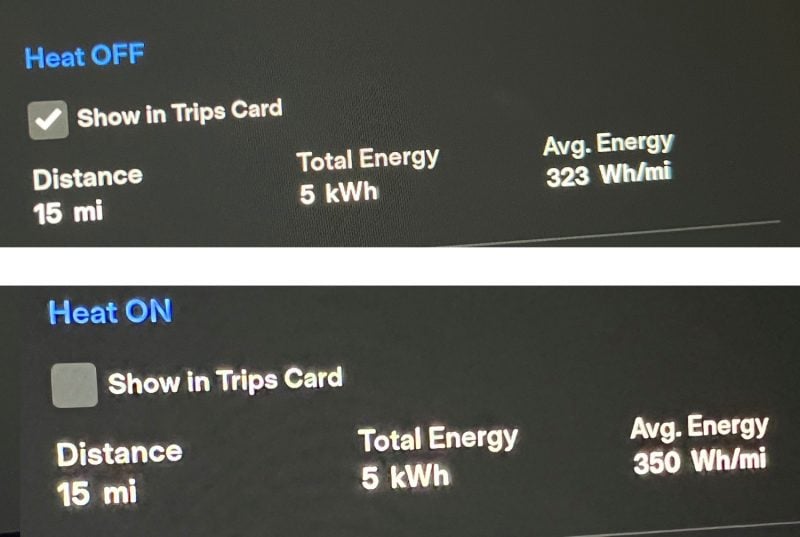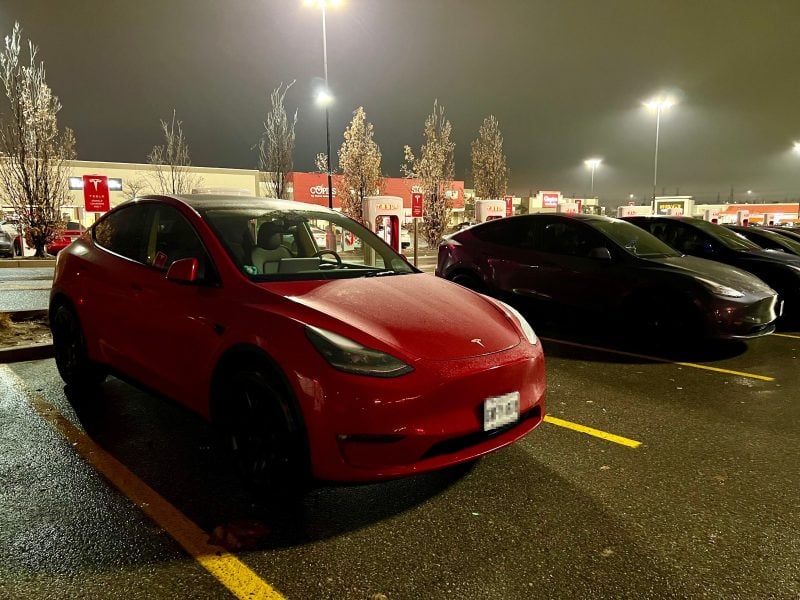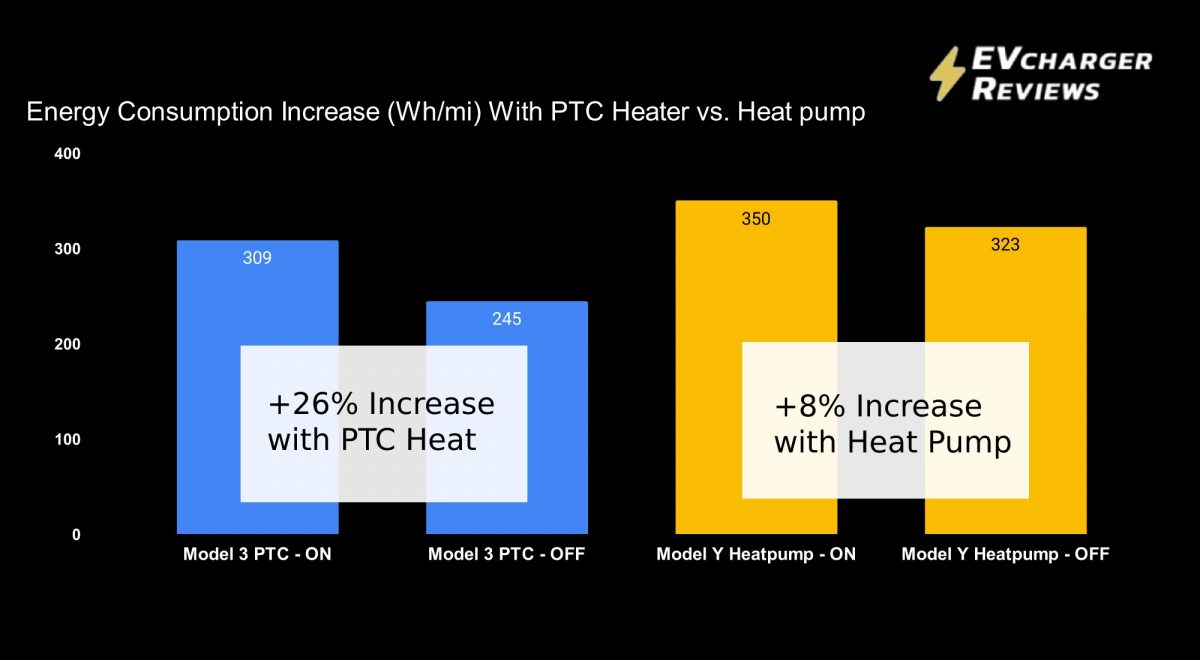The other week we investigated how much extra energy is required for driving a PTC heater-equipped Tesla Model 3 in freezing temperatures. Our tests showed that generously heating the cabin to 71 degrees Fahrenheit required an additional 26% of energy during a 15 mile loop! We decided to repeat the same experiment with a heat pump equipped Model Y to compare the relative energy consumption increases between the two methods of producing cabin heat.
Results
After completing the experiment and recording the data from the trip computer, we calculated that running the heat in the Model Y only increased the (Wh/mi) energy consumption by only 8% compared to the 26% increase using a PTC heater in a Model 3. That is an absolutely huge improvement in energy efficiency.
Methodology
- We were less interested in comparing the energy consumption numbers of Model 3 and Model Y head to head. Instead, we are looking for the relative % increase in consumption under similar conditions.
- The ambient temperature was hovering around 34 degrees.
- The PTC car was a 2019 Model 3 SR+, and the heat pump car was a 2022 Model Y LR. The Model Y was equipped with winter tires.
- In the heated runs, the HVAC was set to 71 degrees Fahrenheit, and fan speed 3.
- In the unheated runs, the HVAC was set to LOW temperature with fan speed 1 to prevent windshield fogging. But the driver’s seat was heated for comfort.
- The testing router was a 15 mile loop with 2 miles of city driving at 40 mph, and 13 miles of 70 mph freeway driving.

Conclusion
We have heard about the benefits of heat pumps in the past, but to see the numbers firsthand was remarkable. A 8% penalty in the winter is relatively minor and is comparable to the decreased efficiency of gasoline combustion engines in the winter. However, a 26% increase in energy consumption of the PTC heater-equipped car may require additional route planning in cold weather.
If you live in a cold climate where the temperatures regularly drop to the freezing mark or below, you need to be aware of this substantial difference in energy consumption. Paying an upfront premium for an EV with a heat pump will pay back dividends in lower energy costs and less time spent charging.
Update: A few helpful Reddit commenters pointed out that if both cars had been cold-soaked for several hours, the gap would have been closer. Because heat pump equipped cars with an octovalve are able to recover waste heat from the drivetrain. Something to test next. Thanks guys!

More about Heat Pumps
To learn more about how heat pumps manage electric and thermal energy in EVs, check out this recent video from Tesla about their heat pump systems.
Related
How Much Battery Degradation Is There After 30k Miles Of Supercharging?
How to Maximize EV Range in Cold Winter Months
How to Protect the EV battery in the Extreme Cold
Why Level 1 EV charging is (even) slower in cold months
Considering buying a Tesla? Use our referral link to get $1,000 off, and help support our content.
